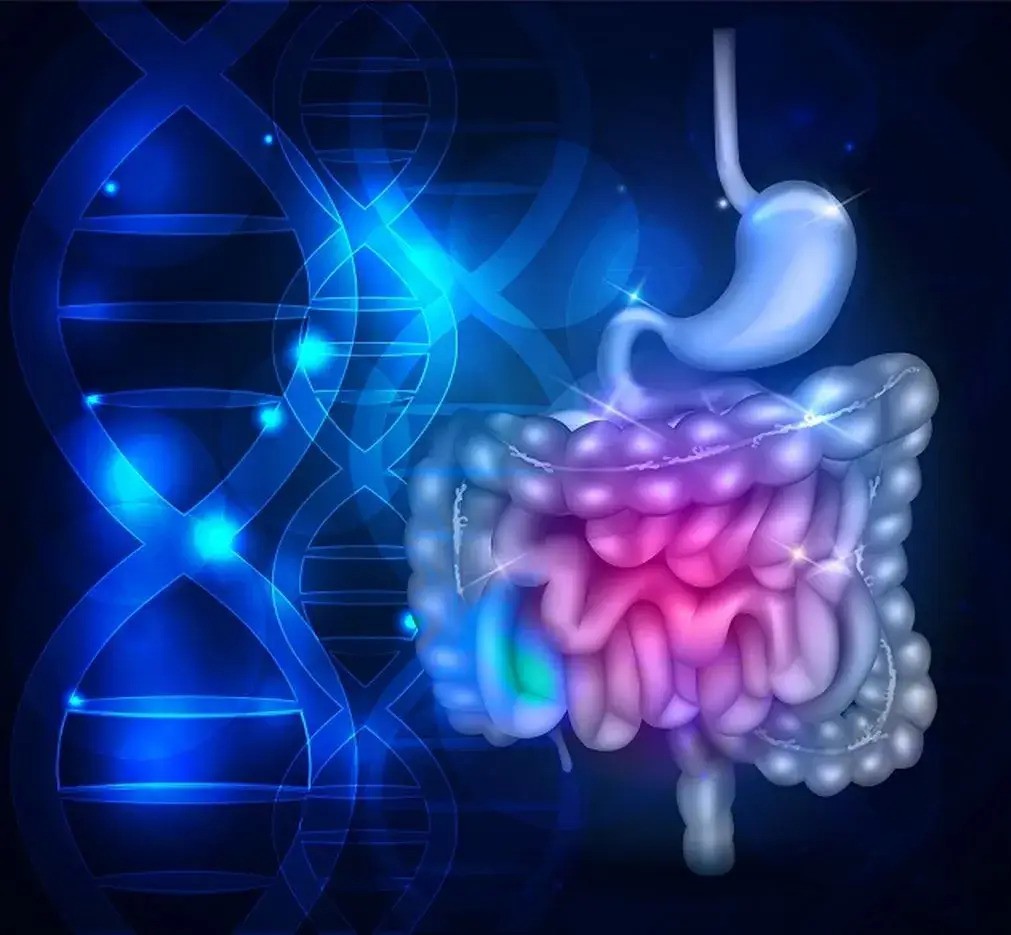
Telemedicine Appointments Are Now Available
Your Trusted Double - Board Certified Gastroenterologist





Constipation is passage of small amounts of hard, dry bowel movements, usually fewer than three times a week. People who are constipated may find it difficult and painful to have a bowel movement. Other symptoms of constipation include feeling bloated, uncomfortable, and sluggish.
Many people think they are constipated when, in fact, their bowel movements are regular. For example, some people believe they are constipated, or irregular, if they do not have a bowel movement every day. However, there is no right number of daily or weekly bowel movements. Normal may be three times a day or three times a week depending on the person. Also, some people naturally have firmer stools than others.
At one time or another, almost everyone gets constipated. Poor diet and lack of exercise are usually the causes. In most cases, constipation is temporary and not serious. Understanding its causes, prevention, and treatment will help most people find relief.
For more information about this topic, visit:
International Foundation for Functional Gastrointestinal Disorders Inc.
According to the 1996 National Health Interview Survey, about 3 million people in the United States have frequent constipation. Those reporting constipation most often are women and adults age 65 and over. Pregnant women may have constipation, and it is a common problem following childbirth or surgery.
Constipation is one of the most common gastrointestinal complaints in the United States, resulting in about 2 million doctor visits annually. However, most people treat themselves without seeking medical help, as is evident from the millions of dollars Americans spend on laxatives each year.
To understand constipation, it helps to know how the colon (large intestine) works. As food moves through the colon, it absorbs water while forming waste products, or stool. Muscle contractions in the colon push the stool toward the rectum. By the time stool reaches the rectum, it is solid because most of the water has been absorbed.
The hard and dry stools of constipation occur when the colon absorbs too much water or if the colon’s muscle contractions are slow or sluggish, causing the stool to move through the colon too slowly. Common causes of constipation are:
Not Enough Fiber in the Diet
The most common cause of constipation is a diet low in the fiber found in vegetables, fruits, and whole grains, and high in the fats found in cheese, eggs, and meats. People who eat plenty of high-fiber foods are less likely to become constipated. Fiber–both soluble and insoluble–is the part of fruits, vegetables, and grains that the body cannot digest. Soluble fiber dissolves easily in water and takes on a soft, gel-like texture in the intestines. Insoluble fiber passes through the intestines almost unchanged. The bulk and soft texture of fiber help prevent hard, dry stools that are difficult to pass. According to the National Center for Health Statistics, Americans eat an average of 5 to 14 grams of fiber daily,* short of the 20 to 35 grams recommended by the American Dietetic Association. Both children and adults eat too many refined and processed foods from which the natural fiber has been removed. A low-fiber diet also plays a key role in constipation among older adults, who may lose interest in eating and choose convenience foods low in fiber. In addition, difficulties with chewing or swallowing may force older people to eat soft foods that are processed and low in fiber. Learn more about a High-Fiber Diet.
*National Center for Health Statistics. Dietary Intake of Macronutrients, Micronutrients, and Other Dietary Constituents: United States, 1988-94. Vital and Health Statistics, Series 11, number 245. July 2002.
Not Enough Liquids
Liquids like water and juice add fluid to the colon and bulk to stools, making bowel movements softer and easier to pass. People who have problems with constipation should drink enough of these liquids every day, about eight 8-ounce glasses. However, alcohol and liquids that contain caffeine, like coffee and cola drinks, have a dehydrating effect.
Lack of Exercise
Lack of exercise can lead to constipation, although doctors do not know precisely why. For example, constipation often occurs after an accident or during an illness when one must stay in bed and cannot exercise.
Medications
Some medications can cause constipation. They include:
Irritable Bowel Syndrome (IBS)
Some people with IBS, also known as spastic colon, have spasms in the colon that affect bowel movements. Constipation and diarrhea often alternate, and abdominal cramping, gassiness, and bloating are other common complaints. Although IBS can produce lifelong symptoms, it is not a life-threatening condition. It often worsens with stress, but there is no specific cause or anything unusual that the doctor can see in the colon.
Changes in Life or Routine
During pregnancy, women may be constipated because of hormonal changes or because the heavy uterus compresses the intestine. Aging may also affect bowel regularity because a slower metabolism results in less intestinal activity and muscle tone. In addition, people often become constipated when traveling because their normal diet and daily routines are disrupted.
Abuse of Laxatives
Myths about constipation have led to a serious abuse of laxatives. This is common among people who are preoccupied with having a daily bowel movement. Laxatives usually are not necessary and can be habit-forming. The colon begins to rely on laxatives to bring on bowel movements. Over time, laxatives can damage nerve cells in the colon and interfere with the colon’s natural ability to contract. For the same reason, regular use of enemas can also lead to a loss of normal bowel function.
Ignoring the Urge to Have a Bowel Movement People who ignore the urge to have a bowel movement may eventually stop feeling the urge, which can lead to constipation. Some people delay having a bowel movement because they do not want to use toilets outside the home. Others ignore the urge because of emotional stress or because they are too busy. Children may postpone having a bowel movement because of stressful toilet training or because they do not want to interrupt their play.
Specific Diseases
Diseases that cause constipation include neurological disorders, metabolic and endocrine disorders, and systemic conditions that affect organ systems. These disorders can slow the movement of stool through the colon, rectum, or anus. Several kinds of diseases can cause constipation:
Problems with the Colon and Rectum
Intestinal obstruction, scar tissue (adhesions),
diverticulosis, tumors, colorectal stricture, Hirschsprung’s disease, or cancer can compress, squeeze, or narrow the intestine and rectum and cause constipation.
Problems with Intestinal Function (Chronic Idiopathic Constipation) Some people have chronic constipation that does not respond to standard treatment. This rare condition, known as idiopathic (of unknown origin) chronic constipation may be related to problems with intestinal function such as problems with hormonal control or with nerves and muscles in the colon, rectum, or anus. Functional constipation occurs in both children and adults and is most common in women. Colonic inertia and delayed transit are two types of functional constipation caused by decreased muscle activity in the colon. These syndromes may affect the entire colon or may be confined to the lower or sigmoid colon. Functional constipation that stems from abnormalities in the structure of the anus and rectum is known as anorectal dysfunction, or anismus. These abnormalities result in an inability to relax the rectal and anal muscles that allow stool to exit.
Most people with constipation do not need extensive testing and can be treated with changes in diet and exercise. For example, in young people with mild symptoms, a medical history and physical examination may be all the doctor needs to suggest successful treatment. The tests the doctor performs depend on the duration and severity of the constipation, the person’s age, and whether blood in stools, recent changes in bowel movements, or weight loss have occurred.
Medical History
The doctor may ask a patient to describe his or her constipation, including duration of symptoms, frequency of bowel movements, consistency of stools, presence of blood in the stool, and toilet habits (how often and where one has bowel movements). A record of eating habits, medication, and level of physical activity or exercise will also help the doctor determine the cause of constipation.
The clinical definition of constipation is any two of the following symptoms for at least 12 weeks (not necessarily consecutive) in the previous 12 months:
Physical Examination
A physical exam may include a rectal exam with a gloved, lubricated finger to evaluate the tone of the muscle that closes off the anus (anal sphincter) and to detect tenderness, obstruction, or blood. In some cases, blood and thyroid tests may be necessary to look for thyroid disease and serum calcium or to rule out inflammatory, neoplastic, metabolic, and other systemic disorders. Extensive testing usually is reserved for people with severe symptoms, for those with sudden changes in number and consistency of bowel movements or blood in the stool, and for older adults. Additional tests that may be used to evaluate constipation include:
Because of an increased risk of colorectal cancer in older adults, the doctor may use tests to rule out a diagnosis of cancer, including:
Colorectal transit study
This test, reserved for those with chronic constipation, shows how well food moves through the colon. The patient swallows capsules containing small markers that are visible on an x-ray. The movement of the markers through the colon is monitored with abdominal x rays taken several times 3 to 7 days after the capsule is swallowed. The patient follows a high-fiber diet during the course of this test.
Anorectal function tests
These tests diagnose constipation caused by abnormal functioning of the anus or rectum (anorectal function). Anorectal manometry evaluates anal sphincter muscle function. For this test, a catheter or air-filled balloon, inserted into the anus is slowly pulled back through the sphincter muscle to measure muscle tone and contractions. Defecography is an x-ray of the anorectal area that evaluates completeness of stool elimination, identifies anorectal abnormalities, and evaluates rectal muscle contractions and relaxation. During the exam, the doctor fills the rectum with a soft paste that is the same consistency as stool. The patient sits on a toilet positioned inside an x-ray machine and then relaxes and squeezes the anus to expel the paste. The doctor studies the x-rays for anorectal problems that occurred as the paste was expelled. Barium enema x-ray. This exam involves viewing the rectum, colon, and lower part of the small intestine to locate any problems. This part of the digestive tract is known as the bowel. This test may show intestinal obstruction and Hirschsprung’s disease, a lack of nerves within the colon. The night before the test, bowel cleansing, also called bowel prep, is necessary to clear the lower digestive tract. The patient drinks a special liquid to flush out the bowel. A clean bowel is important, because even a small amount of stool in the colon can hide details and result in an incomplete exam. Because the colon does not show up well on x-rays, the doctor fills it with barium, a chalky liquid that makes the area visible. Once the mixture coats the inside of colon and rectum, x-rays are taken that reveal their shape and condition. The patient may feel some abdominal cramping when the barium fills the colon, but usually feels little discomfort after the procedure. Stools may be a whitish color for a few days after the exam. Sigmoidoscopy or colonoscopy. An examination of the rectum and lower (sigmoid) colon is called a sigmoidoscopy. An examination of the rectum and entire colon is called a colonoscopy. The patient usually has a liquid dinner the night before a sigmoidoscopy and takes an enema early the next morning. A light breakfast and a cleansing enema an hour before the test may also be necessary. To perform a sigmoidoscopy, the doctor uses a long, flexible tube with a light on the end called a sigmoidoscope to view the rectum and lower colon. First, the doctor examines the rectum with a gloved, lubricated finger. Then, the sigmoidoscope is inserted through the anus into the rectum and lower colon. The procedure may cause a mild sensation of wanting to move the bowels and abdominal pressure. Sometimes the doctor fills the colon with air to get a better view. The air may cause mild cramping. Learn more about a sigmoidoscopy. To perform a colonoscopy, the doctor uses a flexible tube with a light on the end called a colonoscope to view the entire colon. This tube is longer than a sigmoidoscope. The same bowel cleansing used for the barium x-ray is needed to clear the bowel of waste. The patient is lightly sedated before the exam. During the exam, the patient lies on his or her side and the doctor inserts the tube through the anus and rectum into the colon. If an abnormality is seen, the doctor can use the colonoscope to remove a small piece of tissue for examination (biopsy). The patient may feel gassy and bloated after the procedure.
Although treatment depends on the cause, severity, and duration, in most cases dietary and lifestyle changes will help relieve symptoms of constipation and help prevent it.
Diet
A diet with enough fiber (20 to 35 grams each day) helps form soft, bulky stool. A doctor or dietitian can help plan an appropriate diet. A high-fiber diet includes beans, whole grains and bran cereals, fresh fruits, and vegetables such as asparagus, brussels sprouts, cabbage, and carrots. For people prone to constipation, limiting foods that have little or no fiber, such as ice cream, cheese, meat, and processed foods, is also important.
Lifestyle Changes
Other changes that can help treat and prevent constipation include drinking enough water and other liquids such as fruit and vegetable juices and clear soups, engaging in daily exercise, and reserving enough time to have a bowel movement. In addition, the urge to have a bowel movement should not be ignored.
Laxatives
Most people who are mildly constipated do not need laxatives. However, for those who have made diet and lifestyle changes and are still constipated, doctors may recommend laxatives or enemas for a limited time. These treatments can help retrain a chronically sluggish bowel. For children, short-term treatment with laxatives, along with retraining to establish regular bowel habits, also helps prevent constipation. A doctor should determine when a patient needs a laxative and which form is best. Laxatives taken by mouth are available in liquid, tablet, gum, powder, and granule forms. They work in various ways:
People who are dependent on laxatives need to slowly stop using them. A doctor can assist in this process. In most people, this restores the colon’s natural ability to contract.
Other Treatments
Treatment may be directed at a specific cause. For example, the doctor may recommend discontinuing medication or performing surgery to correct an anorectal problem such as rectal prolapse. People with chronic constipation caused by anorectal dysfunction can use biofeedback to retrain the muscles that control release of bowel movements. Biofeedback involves using a sensor to monitor muscle activity that at the same time can be displayed on a computer screen, allowing for an accurate assessment of body functions. A health care professional uses this information to help the patient learn how to use these muscles. Surgical removal of the colon may be an option for people with severe symptoms caused by colonic inertia. However, the benefits of this surgery must be weighed against possible complications, which include abdominal pain and diarrhea.
Check Out Our Reviews & Testimonials
At Midwest GI Health we are proud to share our patient referrals from Healthgrades, Vitals, Google and Facebook. Please take some time to see how pleased our patients are with our professionalism and quality of care.
After years and years of stomach issues and having the same simple tests done with no results, I saw Dr. Taormina and he’s actually trying to help figure it all out, new tests…

The staff was very professional and friendly. The exam was explained by a nurse and the Anesthesiologist then came in to explain what she was going to do. Dr Taormina came…

The facility is small enough you don’t feel like a number and big enough you know they have what they need in case of an emergency. Dr Taormina is easy to talk to and answers all questions. Explains everything well, easy to understand. The group of nurses are also great!

Free Resources




with the Exceptional Service You Deserve!
3601 NE Ralph Powell Rd, Suite A
Lee’s Summit, MO 64064
Phone: (816) 836-2200
Fax: (816) 836-2244
medical marketing & seo by: kcwebdesigner.com | kcseopro.com